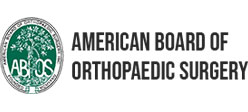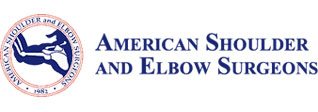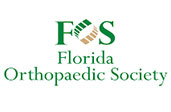- Shoulder Arthroscopy
-

- Arthroscopy is a minimally invasive diagnostic and surgical procedure performed for joint problems. Shoulder arthroscopy is performed using a pencil-sized instrument called an arthroscope. The arthroscope consists of a light system and camera that projects images of the surgical site onto a computer screen for your surgeon to clearly view. Arthroscopy is used to treat disease conditions and injuries involving the bones, cartilage, tendons, ligaments, and muscles of the shoulder joint.
-
- Shoulder Joint Replacement
-

- Total shoulder replacement surgery is performed to relieve symptoms of severe shoulder pain and disability due to arthritis. In this surgery, the damaged articulating parts of the shoulder joint are removed and replaced with artificial prostheses. Replacement of both the humeral head and the socket is called a total shoulder replacement.
-
- Revision Shoulder Replacement
-

- Total shoulder replacement is the replacement of the head of the humerus (upper arm bone) and the glenoid cavity (cavity of the shoulder blade) into which the humerus fits, with artificial prostheses to relieve pain, swelling, and stiffness caused due to damage of cartilage at the articulating surfaces.
-
- Reverse Shoulder Replacement
-

- Conventional surgical methods such as total shoulder joint replacement are not very effective in the treatment of rotator cuff arthropathy. Reverse total shoulder replacement is an advanced surgical technique specifically designed for rotator cuff tear arthropathy, a condition where you suffer from both shoulder arthritis and a rotator cuff tear.
-
- Rotator Cuff Repair
-

- Rotator cuff repair is a surgery to repair an injured or torn rotator cuff. It is usually performed arthroscopically on an outpatient basis. An arthroscope, a small, fiber-optic instrument consisting of a lens, light source, and video camera. The camera projects images of the inside of the joint onto a large monitor, allowing your doctor to look for any damage, assess the type of injury and repair it. Large rotator cuff tears may require open surgery.
-
- Arthroscopic Bankart Repair
-

- The labrum can sometimes tear during a shoulder injury. A specific type of labral tear that occurs when the shoulder dislocates is called a Bankart tear. This is a tear to a part of the labrum called the inferior glenohumeral ligament and is common in the young who sustain a dislocation of the shoulder. A Bankart tear makes the shoulder prone to repeat dislocation in patients under 30 years of age.
-
- Arthroscopic Frozen Shoulder Release
-

- An arthroscopic frozen shoulder release is a minimally-invasive shoulder surgery performed to relieve pain and restore normal function using a special instrument called an “arthroscope”.
-
- Shoulder Reconstruction Surgery
-

- Shoulder reconstruction surgery is an operative procedure in which stretched or torn soft-tissue structures that surround the shoulder joint such as the capsule, ligaments, and cartilage, are repaired to secure the shoulder joint in place. The procedure is mainly employed for the treatment of individuals with shoulder instability, to prevent recurrent joint dislocations, and to restore normal shoulder range of motion and function.
-
- SLAP Repair
-

- A SLAP repair is an arthroscopic shoulder procedure to treat a specific type of injury to the labrum called a SLAP tear.
-
- Complex Shoulder Reconstruction
-

- Shoulder reconstruction is a surgical procedure performed in patients to alleviate shoulder instability, restoring its function and serving to prevent recurrent shoulder dislocations. Shoulder reconstruction surgery involves repair of torn or stretched ligaments so that they are better able to hold the shoulder joint in place.
-
- Capsular Release
-

- A capsular release of the shoulder is surgery performed to release a tight and stiff shoulder capsule, a condition called frozen shoulder or adhesive capsulitis. The procedure is usually performed arthroscopically through keyhole-size incisions.
-
- AC Joint Stabilisation
-

- Acromioclavicular (AC) joint stabilization is a surgical procedure employed to treat severe cases of AC joint dislocation.
-
- Bony Instability Reconstruction of the Shoulder
-

- The shoulder is the most flexible joint in the body. Injury and trauma can tear or stretch the labrum and/or ligaments, causing loosening and instability of the shoulder joint which can lead to partial or complete dislocation of the joint. Bony instability, also known as shoulder instability or glenohumeral instability, refers to the inability to retain the head of the humerus in the glenoid socket due to serious trauma sustained by the soft tissues, and glenoid and humeral bones of the shoulder joint.
-
- Arthroscopic Superior Capsular Reconstruction (SCR)
-

- Superior Capsular Reconstruction is a surgical procedure to repair massive, irreparable rotator cuff tears. The surgery involves reconstruction of the superior capsule of the shoulder joint using an autograft (tissue from the same person) or an allograft (tissue from a donor).
-
- Acromioclavicular (AC) Joint Reconstruction
-

- The acromioclavicular (AC) joint is one of the joints present within your shoulder. It is formed between a bony projection at the top of the shoulder blade (acromion) and the outer end of the clavicle (collarbone). The joint is enclosed by a capsule and supported by ligaments.
-
- Intraarticular Shoulder Injection
-

- The shoulder is prone to different kinds of injuries and inflammatory conditions. An intraarticular shoulder injection is a minimally invasive procedure to treat pain and improve shoulder movement. It may be performed with the help of ultrasound or fluoroscopic imaging which allows your physician to precisely target the intraarticular space.
-







